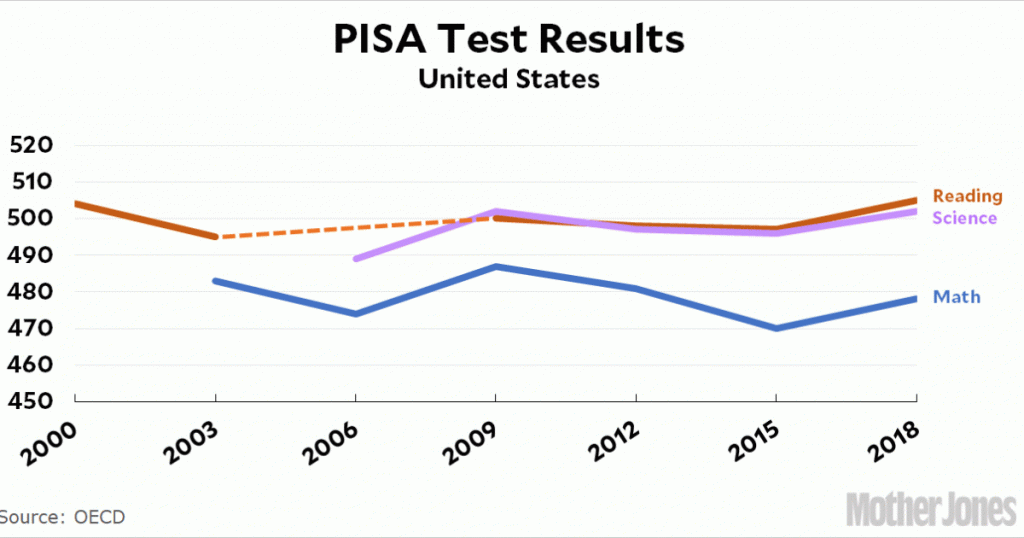Latest International Test Shows US Performance Is . . . About the Same as Always
The results of the latest PISA test are out, and since a picture is worth a thousand words, here’s a picture:
The PISA test is administered every three years to 15-year-olds, and roughly speaking US kids have been doing about the same on it for a couple of decades. However, what’s unique about PISA is that it’s an international test, which means we get to compare ourselves to other countries and then wail about how poorly we’re doing. Here are our scores on the reading test compared to a small subset of our peer countries:
Not too bad! Canada is the outlier here, but we’re at the top end of the cluster of other countries. Now here’s math:
Not so good! Japan is the unsurprising winner, and the US is bringing up the rear as it usually does. PISA’s approach to math is a little unusual, so every three years there’s a tedious discussion about whether this is the reason American kids don’t do very well even though they do fine on other math tests. Personally I don’t know. But we sure seem to fill up Silicon Valley and Wall Street with quants and coders every year.
As always when I venture into OECD territory, I conclude that the whole test is a sham and the real test is whether or not you can figure out how to use the OECD’s data tools. I’ll give myself a B- this time around. However, you can also browse around the results on the Department of Education’s site, which includes comprehensive league tables that compare the US to the entire set of other countries that participate in PISA. Good luck!





